If you’ve ever ordered a plate of pasta in Italy, you might have noticed that you weren’t just ordering food; it’s a whole experience that comes with its own set of rules that are not to be broken, pain of ridicule, or at least some light teasing. That’s because Italians practically invented etiquette, and no set of norms is more important than the one surrounding food. As the New York Times reported, Italy was “etiquette central” back in Renaissance Europe, and apparently the only land on the continent where people used cutlery to consume their meals. Since then, Italy has apparently remained the etiquette police, especially where food is concerned.
As such, we would be remiss if we sent you off to Italy without preparing you for what might happen if you get things wrong while ordering pasta at a restaurant. These tips will come in handy not only for enjoying your Italian food more –- after all, Italian dining etiquette is in place first and foremost to maximize the pleasure of eating –- but also for avoiding side-eye from snooty Italians. In other words, knowing proper etiquette tips will help you blend in with the locals, the most cherished of all travel goals. After all, you can’t do as the Romans in Rome if you don’t understand what they’re doing in the first place. So let’s take a look at the main rules you need to remember before you set out on your culinary adventure.
1. Don’t cut your spaghetti
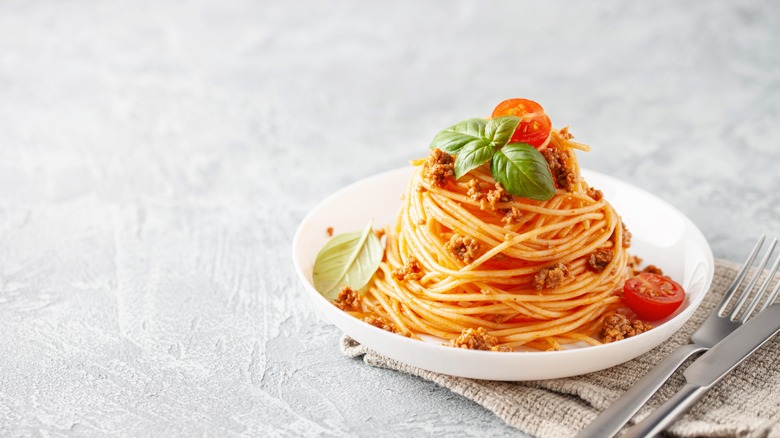
When you’re finally served that big, hearty plate of Italian spaghetti you’ve been craving for months, it may feel tempting to dig in and start cutting away, trying to get the pasta in your mouth as quickly as possible. Careful, though, as cutting spaghetti is a major etiquette faux pas at Italian restaurants. Your meal is supposed to be eaten slowly –- the idea is to savor every bite, so the food shouldn’t be consumed in a way that makes it easy to just shove it into your mouth. Second, cutting disturbs the harmony of the dish. If spaghetti were meant to taste and feel shorter, it would have been made shorter to begin with.
Another notion you should be disabused of immediately is that it’s okay to use a spoon to eat your spaghetti. This is categorically false. Again, using a spoon will make it easier to eat your spaghetti more quickly, and that is simply not the point. What you should be doing instead, is taking your fork, sticking it somewhere into the middle of your plate, and twirling it until it’s surrounded by tightly packed spaghetti. Only then can you bring it to your mouth gracefully, knowing that you won’t be spilling sauce everywhere or slurping unbecomingly. And there is one more thing you should know: Don’t expect to eat your spaghetti on a flat plate. It will be served on a soup plate because the rounded edges will help keep the sauce contained as you twirl your fork.
2. Scoop up remaining sauce with bread
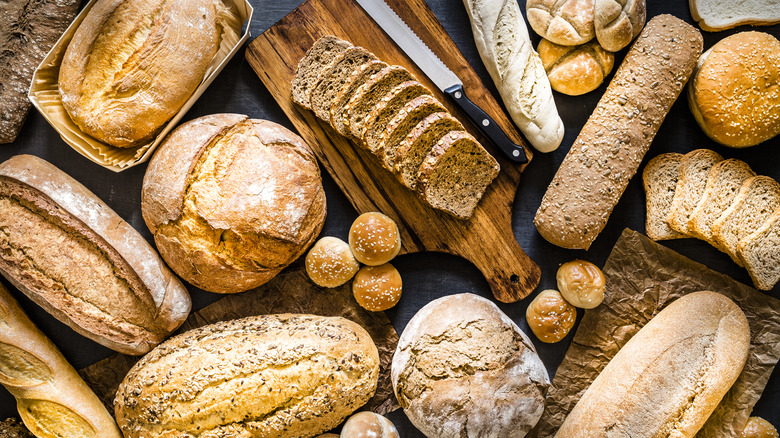
Another thing the Italians don’t appreciate, in addition to a mad rush to eat spaghetti, is too much sauce on a plate. In Italy, if you’re at a decent restaurant, you won’t find your pasta dishes bathed in sauce. Rather, there will be a tasteful amount, just enough to coat your pasta and give it flavor, but not so much that your noodles will be swimming in it. This isn’t soup, after all. Even so, some sauce is likely to rub off on the sides of the plate. You might even have a few small puddles of deliciousness left over after all your pasta is gone. The last thing you want to do in this situation is stick your finger in it and bring it to your mouth. Don’t even bother trying to get at it with your fork –- those cold, unfeeling tines will make it impossible. And forget about the unthinkable, the senseless act of picking up your plate and licking it directly.
What you need here is the “scarpetta.” This is Italian for “little shoe,” and it refers to a piece of bread — which you must diligently break off from the loaf in the common bread basket that has undoubtedly been placed on your table — used to scrape up the remaining sauce on your plate. Not only is this the most elegant way to finish off your sauce, it is also the most delicious.
3. Save the coffee for later

As Americans, we tend to expect all the coffee all the time. It doesn’t matter if it’s morning, noon, night, or smack in the middle of a meal. Coffee must be available or one will freak out. Although this may be an exaggeration, it is true that in the U.S., the rules surrounding coffee consumption are fairly relaxed. While saving coffee for after dinner might seem like a familiar notion, no one will look at you funny if you take a few sips before or during your meal.
Not so in Italy. If you happen to even order your coffee while still enjoying your plate of pasta, said order will be conveniently forgotten. It will also be outright denied if you’re still nursing a glass of wine. Your server might even point out your foible by informing you that they will have to wait until you’re ready, which apparently means something different to them than it does to you. In fact, the longer you wait to order your coffee, the better off you’ll be, to the point where you might even want to drink it on the way out of the restaurant. Indeed, one place you will not be denied your coffee is at the bar. Many restaurants in Italy prefer that patrons pay the check directly at the till. When you get up to do this, you can order your coffee, receive it in no time, and drink it then and there.
4. Go easy on the Parmesan

NataliaZa/Shutterstock
No matter which Italian restaurant you go to in Italy, you can be sure to find plenty of Parmesan on hand, whether served up pre-grated, or freshly grated directly onto your plate by a dutiful server. That said, you might want to pass on extra Parmesan when dining in Italy. After all, the cheese has a strong flavor and texture, and too much of it risks taking over the dish.
Not only that, but it’s important to pay attention to which dishes can and cannot accommodate Parmesan topping, at least according to Italians. Those that can include robust, flavorful sauces like marinara, Bolognese, and variations thereof. Those that cannot involve specialty ingredients like truffles, which have a unique flavor profile that is not to be messed with by adding something as assertive as Parmesan. The boldest ingredient you can add to a truffle dish is butter. Another type of pasta that won’t accommodate Parmesan in Italy is a seafood dish, such as spaghetti with clams, or alle vongole, as they say in Italy. Fish is seen as having a delicate flavor that could be overpowered by the Parmesan. Spaghetti with clams, in particular, tends to be fairly dry, as it doesn’t have its own sauce. Parmesan on this dish would risk upsetting the balance of oils that make the spaghetti go down smoothly, unduly drying out the texture.
5. Expect the pasta to come before the meat
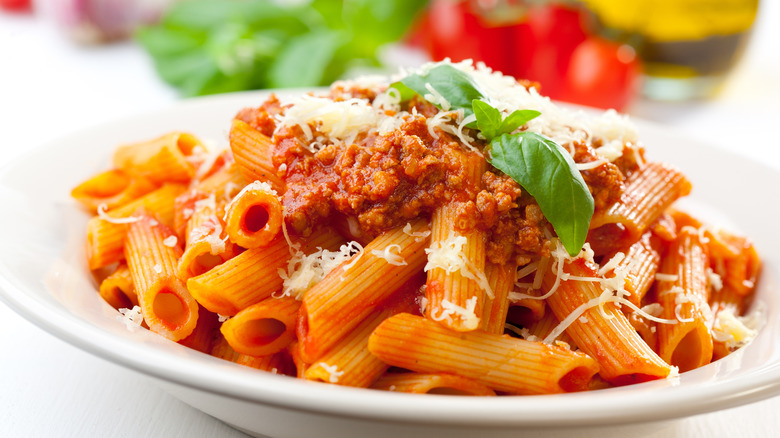
When you order pasta in a restaurant in America, even if it’s an Italian one, it’s likely that you will find it in the entree, or main, section of the menu. But in Italy, this category is non-existent, or perhaps hidden is a better word. Because in Italy, even if you’re embarking on a casual lunch, you’re likely to be offered a meal involving several courses, in which pasta is considered to be the first course, along with rice and other starchy dishes, while meat or fish are typically classified as second courses.
Bear in mind that portion sizes in Italy tend to be smaller than those in the U.S. This means that you might just be hungry enough to enjoy an appetizer, first course, and a second course at any given meal. If you want to order off an Italian menu like a pro, it’s important to fully familiarize yourself with the etiquette surrounding courses. Although the breadth of an Italian menu doesn’t mean that you absolutely must order a dish from each category, if you do choose to go that route, you must expect your pasta to come before the meat and not after. Also, don’t forget yourself and fill up on bread — you will need that bread for your “scarpetta,” while too much starchiness early on might dent your appetite for the “secondo” that is still to come.
6. Don’t complain if your pasta is al dente

Pasta “al dente,” which means “to the tooth” in Italian, is often held up as the ideal level of doneness for a pasta dish. It means the noodle is soft enough to eat comfortably, but not so soft that you miss out on sinking your teeth into something concrete. In other words, with al dente pasta, you’ll need firm use of your teeth. So when you order pasta at a good Italian restaurant in Italy, this is most likely what you’re going to get.
But if you’re not used to “al dente,” don’t dismiss it outright, and certainly don’t complain if that’s what you get. It’s going to work out for the better because there’s a reason pasta is cooked this way. In fact, U.S. News reports that al dente pasta contains a lower glycemic index than mushy, overcooked pasta, which means that you will have to deal with a gentler blood sugar spike when eating pasta cooked the right way. And although al dente may take some getting used to after the first few times trying it, you may actually come to prefer it. The slight chew in the noodles adds texture to your dish so that you’re not just eating one single glob of noodles and sauce.
7. Learn about different pasta shapes

Pasta dishes on Italian menus can sometimes be hard to see if you don’t know what you’re looking for. While you might see a tagliatelle alla Bolognese or penne alla vodka and instantly know what’s going on, you could equally be at a loss if the menu only contains such pasta shapes as strozzapreti or mafaldine.
So let us help you in that regard. Start by browsing our list of 44 types of pastas you should know about. Although Italy boasts more than 300 different types, it’s not likely that you will encounter all of those on a single trip, as pasta shapes tend to be highly regional, with some of them only existing within very restricted areas. By contrast, our list contains some of the more common types you might encounter while dining out in Rome, Florence, or other large cities. This exercise might also be an interesting foray into Italian history. For example, the aforementioned strozzapreti is a unique pasta shape whose name refers to a term that literally means “priest strangler.” This is no accident. Back when Italy was not a country but a mish-mash of papal states, duchies, and kingdoms, priests would go door-to-door collecting taxes and demanding to be fed as they did. If they weren’t, they would confiscate a household’s egg supply. This pasta, then, made without eggs, was literally devised in the hopes that its convoluted shape would strangle these thieving priests.
8. Don’t ask for the pasta to be wrapped up
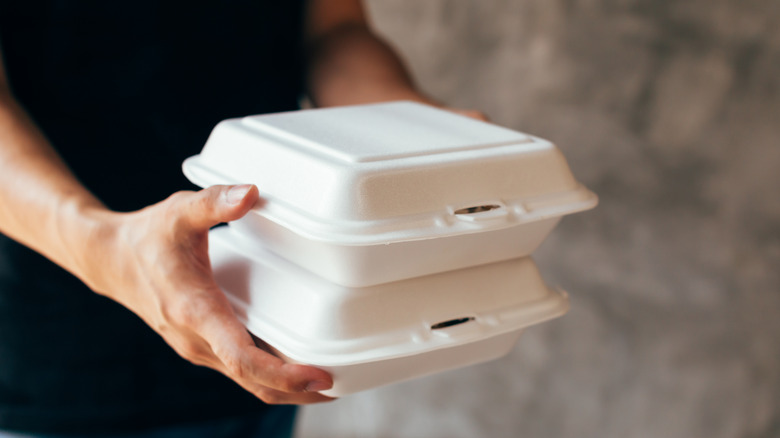
All dishes in Italy — whether they’re appetizers, first courses, second courses, or desserts — are reliably much smaller than your typical dish from Applebee’s, or even higher-end restaurants in America. As such, the concept of a doggy bag is pretty much as foreign as a space rock in Italy. Diners are expected to arrive at a restaurant hungry enough to finish off an entire plate of pasta (or whatever they order), and even for a petite person, this shouldn’t be too hard.
As such, don’t expect to be able to take your food home with you (if for some ungodly reason you’re not able to finish it). You will likely encounter confused looks — and that’s if you’re lucky. If you’re not, you might even be met with some degree of hostility. The dish you’re being served in the restaurant is meant to be perfect as is –- perfectly cooked in terms of flavor and texture –- and taking it home and eating it later, perhaps even reheating it in the microwave (horror of horrors), will change all of that.
That said, waste not, want not. No one is going to force-feed you the rest of that pasta, and if you don’t want to waste it, don’t hesitate to ask for a doggy bag. Who cares what other people think? The only problem you might come up against is the restaurant not having any to-go containers unless it also offers takeout items.
9. Familiarize yourself with common pasta sauces
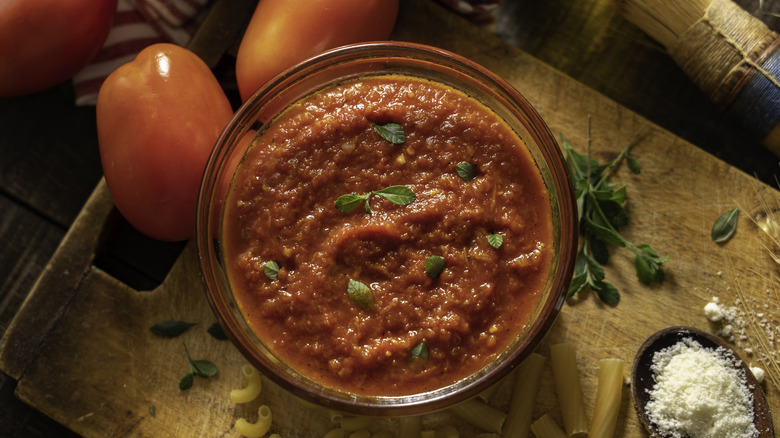
Ordering from a foreign menu in a foreign language can sometimes be a bit daunting. However, due to the popularity of Italian food in the U.S. — where many original Italian terms are used — Americans in Italy don’t always have too much of a hard time understanding the menu. The exception comes when said menu contains pasta shapes or sauces that aren’t so common in America. Or, even if the sauce is common, it might go by a different name depending on which region of Italy you currently find yourself in.
So to help you navigate this predicament, we suggest you familiarize yourself with those pasta sauces that are most commonly used in Italy, not America. This means forget about pasta alfredo or mac and cheese, both of which are American creations, and look more toward classic cacio e pepe –- a dish of Roman origin involving pecorino cheese and pepper –- or pasta puttanesca, a Southern Italian creation made with an anchovy-based tomato sauce and olives. Our handy list of pasta sauce types is a good place to start your research. Even if you can’t remember all of them, though, don’t worry. When you get to the restaurant just ask your server which is their favorite pasta dish and opt for that one. You might not know what you’re ordering, but you know it’s going to be good.







